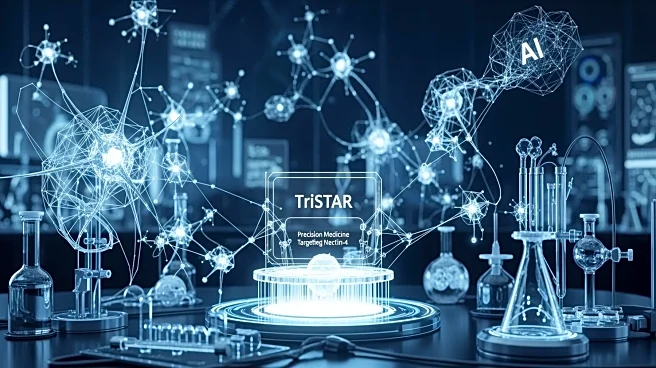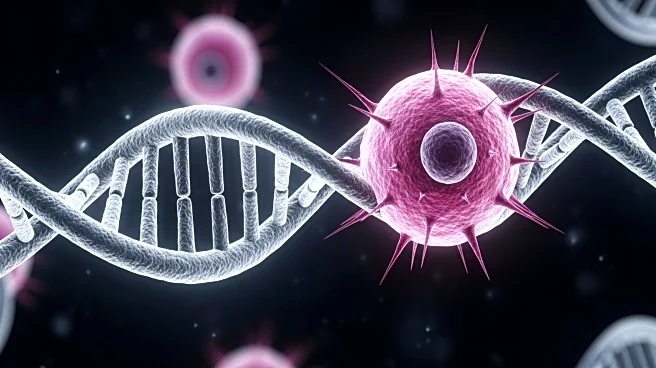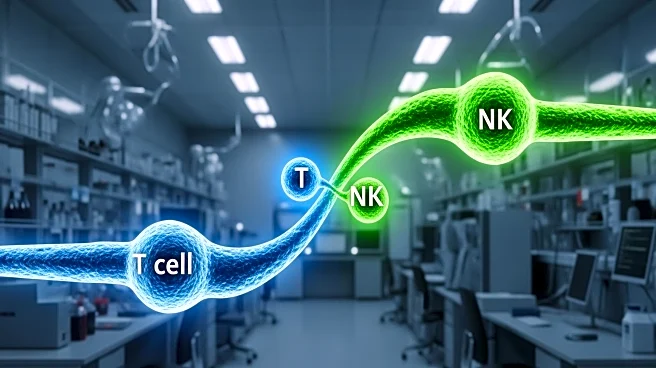What's Happening?
Marengo Therapeutics, Inc., a clinical-stage biotechnology company, is set to present preclinical data on its lead TriSTAR program, TriSTAR0701, at the Society for Immunotherapy of Cancer (SITC) 2025 Annual
Meeting. The TriSTAR platform is a multi-specific antibody-fusion platform targeting Nectin-4, a tumor antigen overexpressed in various solid tumors. This presentation marks the first disclosure of Nectin-4 as a target, showcasing the platform's dual-payload design that combines targeted tumor engagement with synergistic T cell activation. Marengo's collaboration with the National Cancer Institute will feature preclinical presentations exploring combination strategies with standard-of-care modalities.
Why It's Important?
The TriSTAR platform represents a significant advancement in precision immunotherapy, offering a novel approach to targeting solid tumors. By focusing on Nectin-4, Marengo aims to address tumors that are typically resistant to conventional therapies. The platform's ability to selectively engage unique T cell subsets could lead to more effective and durable antitumor responses, potentially transforming treatment outcomes for patients with difficult-to-treat cancers. The collaboration with the National Cancer Institute further underscores the potential impact of these therapies, as they explore rational combinations with existing treatments to enhance efficacy.
What's Next?
Marengo's presentations at the SITC 2025 Annual Meeting will provide insights into the future of precision immunotherapy. The ongoing collaborations with Ipsen and the National Cancer Institute are expected to advance a new class of immune therapies, potentially leading to clinical trials and broader applications in oncology. As Marengo continues to develop its pipeline, the success of the TriSTAR platform could pave the way for new partnerships and innovations in cancer treatment. The company's focus on expanding and redirecting highly activated memory T cells may also lead to breakthroughs in overcoming T cell exhaustion and improving therapeutic outcomes.











